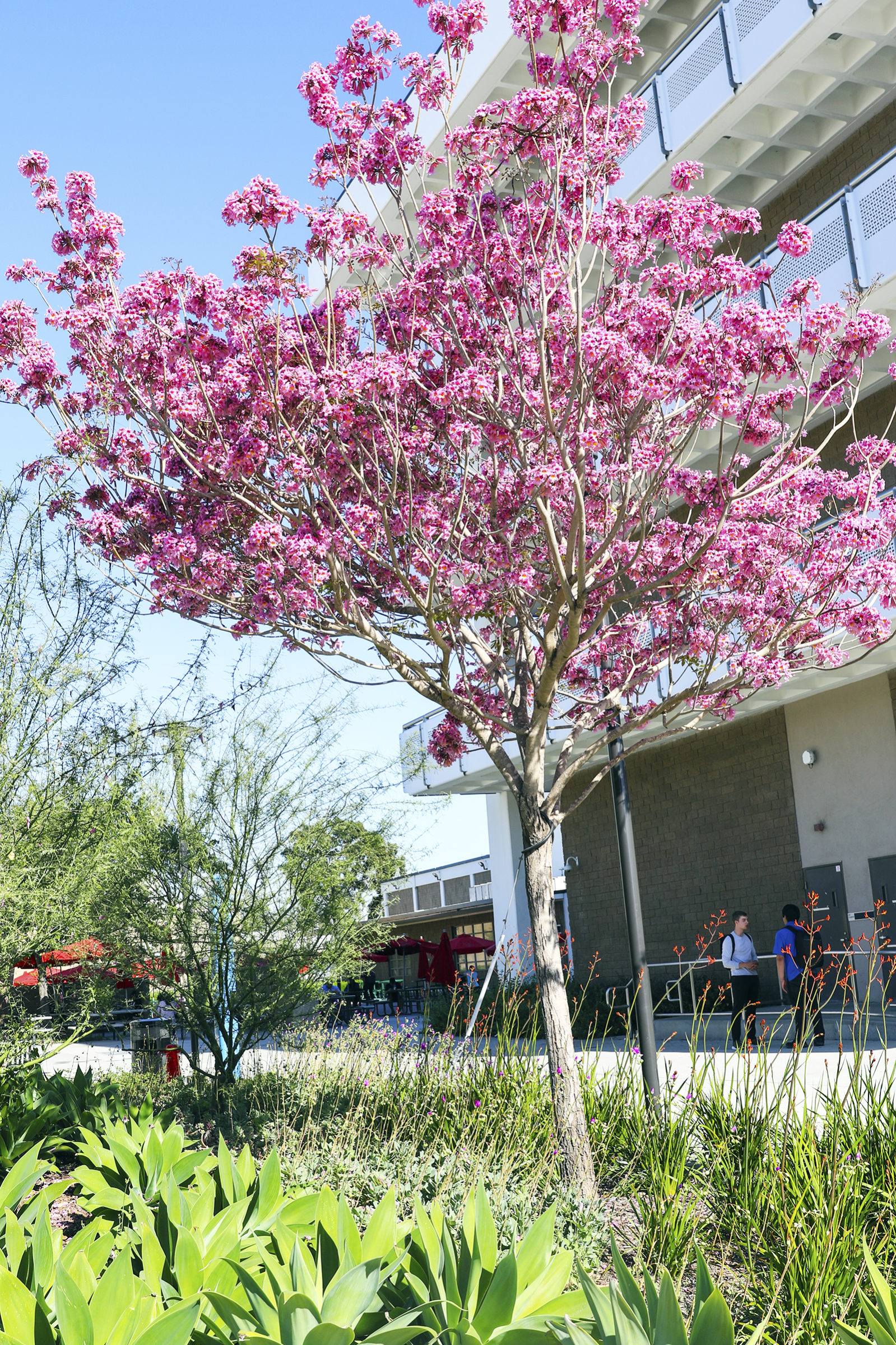In the construction of Santa Ana College Central Mall that began in 2015, a large number of plants and trees were removed from the campus leaving the colleges quad barren of vegetation. Sustainable Rancho Santiago Canyon College district members changed that, launching a college beautification initiative.
In completion of the Central Mall and the grand opening in 2018, Sustainable RSCCD, a group that is concerned with environmental concerns and conservation initiatives on this campus hired landscaping teams to plant new trees, succulents, and shrubs along the Central Mall and around the college campus funded by Measure Q bond dollars.
In September 2018 when landscaping of the Central Mall concluded, the Sustainable RSCCD committee provided a Central Mall Landscape Walking Tour presentation classifying the fifteen new plants and trees along with mapping and describing all of the vegetation.
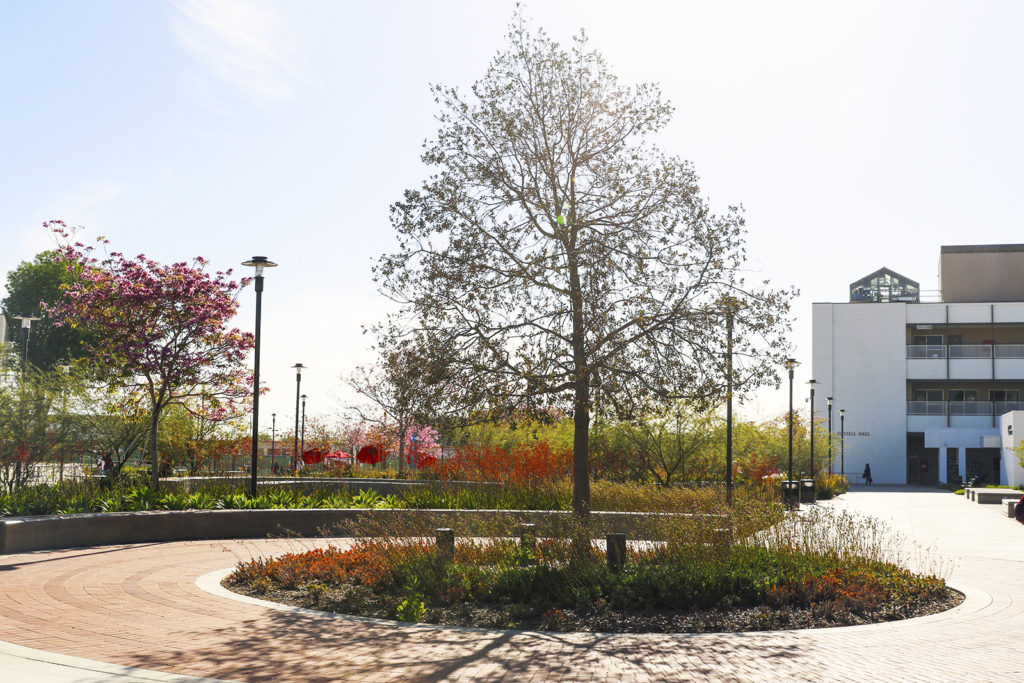
The central mall along with the landscaping project were both created in attempts for the college to implement water reduction initiatives to be in compliance with water reduction standards mandated by Governor Jerry Brown. The college has also implemented a water-wise irrigation system that reduces watering of the Central Mall to only once a week compared to multiple times a week. This water reduction required teams to plant several drought-tolerant plants and hardy trees, that can withstand the Southern California weather.
These are the fifteen trees, plants, and succulents that were planted on the SAC Campus and along the Central Mall:
1.Palos Verdes (Parkinsonia) ‘Desert Museum’

The Palo Verde “desert Museum” is a full-sun hybrid tree native to the Sonoran Desert, the Southwestern United States and parts of Northwestern Mexico. This bright colored green tree translates to “green stick” in Spanish. A tree that flowers yellow blossoms in the spring with blooms that can sometimes be seen during the summer. The Palo Verde can come in two varieties with thorny spines or without them. Sustainable RSCCD has chosen to plant the spineless variety on locations along the Central Mall. This plant can grow up to 25 feet in height and up to 25 feet tall making this tree a beneficial shade barer in years to come.
2.Coastal Live Oak (Quercus Agrifolia):
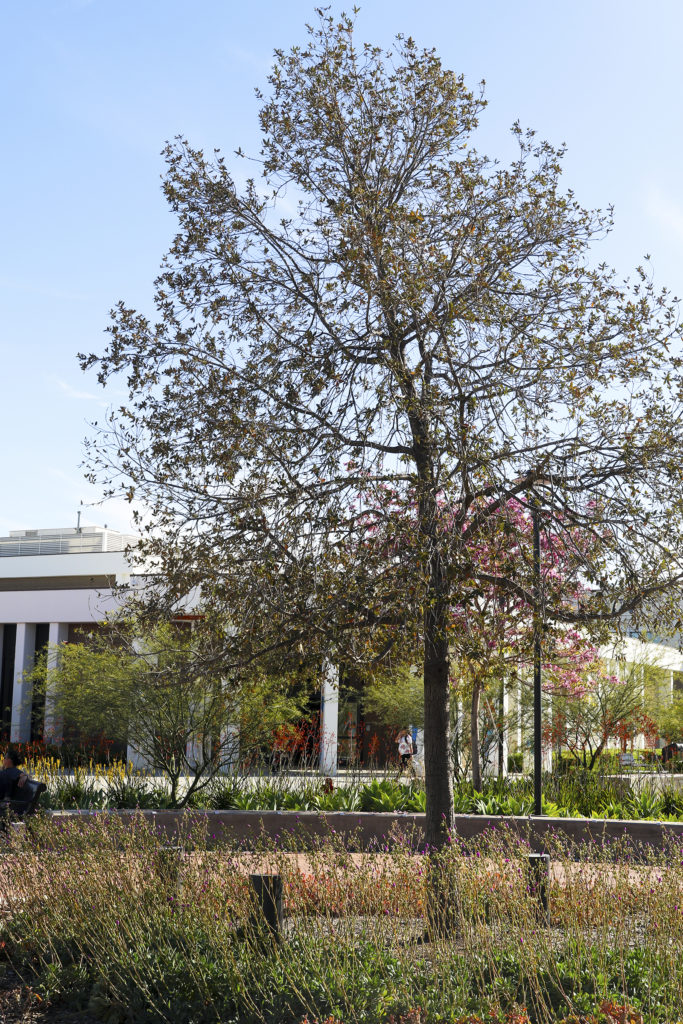
the Coastal Live Oak is a California native evergreen tree that generally grows along the California Coast and is one of the only coastal oaks that’s can actually survive the temperament. The coastal oak can reach heights of 25 to 82 feet and can be up to 15 to 35 feet in length making it another beneficial shade provider. This tree requires full to partial sun and typically flowers in the winter, along with in the spring. The coastal live oak only requires weekly watering, something Sustainable RSCCD members reviewed and chose to meet their weekly watering initiative on the SAC campus. This oak can be seen to the left of the A building between the S building.
3.Holly Oak (Quercus Ilex)

The Holly Oak is a Mediterranean native oak tree that is categorized by dark green leaves that keeps its foliage year round. This large evergreen oak prefers full sun and can withstand only receiving weekly waterings. This oak can grow to heights of 40 to 70 feet and can spread between 50 to 60 feet in width. While being a shade benefit for SAC students this oak is also a good source for birds and squirrels, as a food source. Holy oak trees have been placed along the borders of Nealley Library on the SAC campus.
4.Pink Trumpet Tree (Tabebuia Impetiginosa)
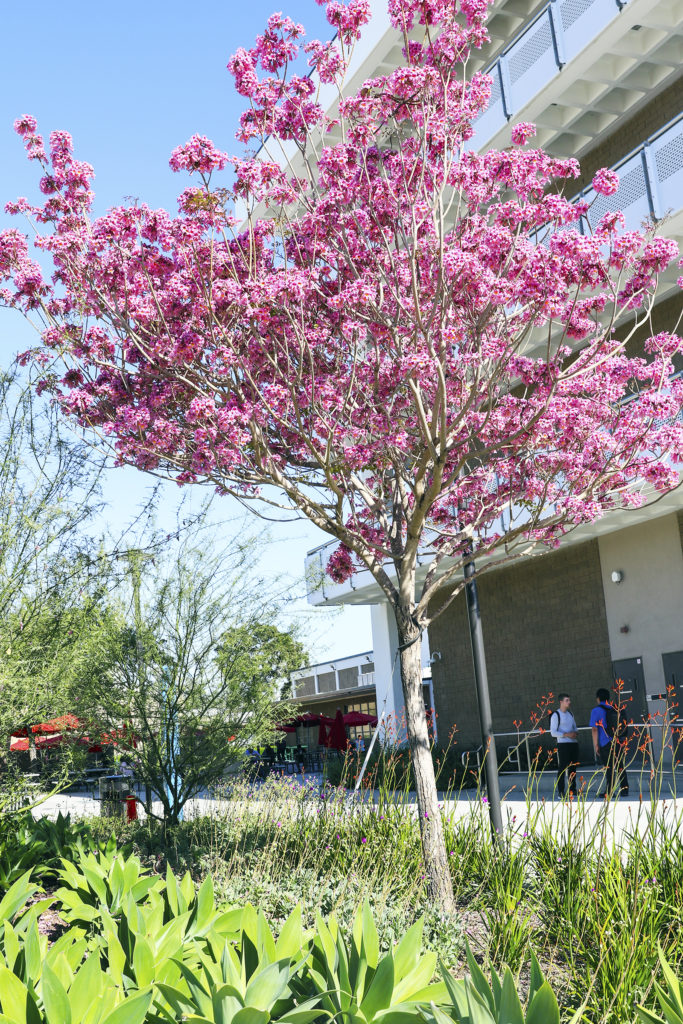
The Pink Trumpet Tree is a South American tree common in northern Mexico, south to northern Argentina and is the national tree of Paraguay. This tree flowers long pink and purple flowers, that give the tree its name. The Pink Trumpet can grow up to 25 feet in height and provides moderate shade to the campus. This tree can also thrive on only weekly watering making it another drought-tolerant California favorite. The pink trumpet tree can be seen along the paths that lead to the central mall fountain, along Dunlap Hall, and by Nealley Library.
5.Fox Tail Agave (Agave Attenuata)
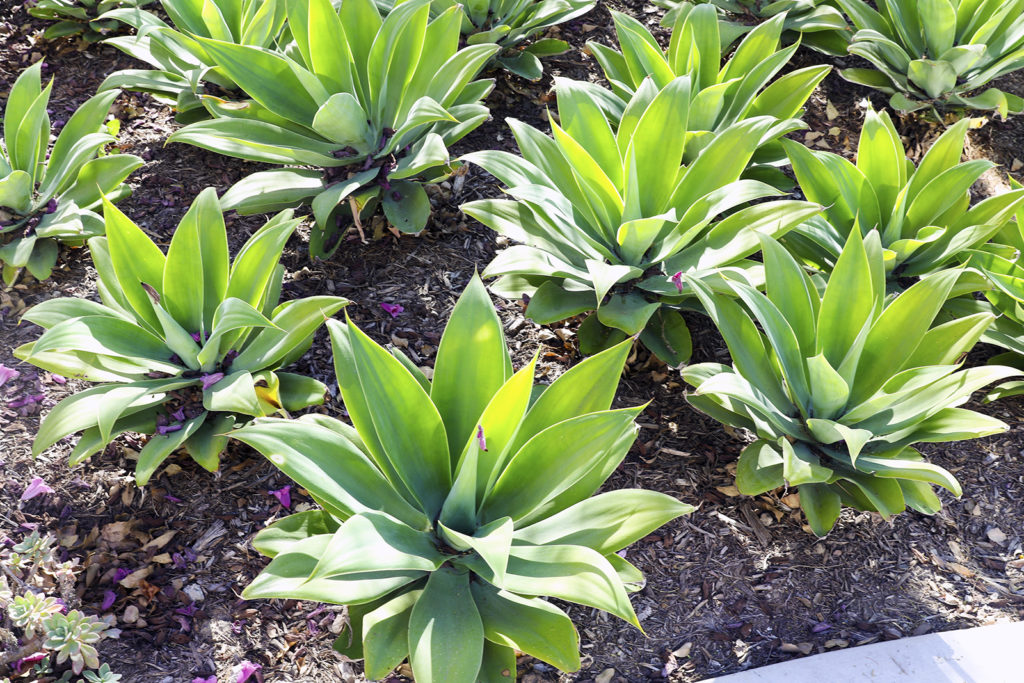
The foxtail agave is a Mexico native plant that is a member of the succulent family. The agave is usually known for producing tequila and the agave gets its name due to its curved inflorescence leaves that resemble an open flower. The foxtail agave can grow up to 3.5 to 5 feet in height and can be up to 5 feet in length. The foxtail agave is also known for its bright and long vibrant blooms of yellow and green. While most agaves have dangerous spines the foxtail does not, making it safe for college campuses because it poses little threat of injury.
6.Kangaroo Paw (Anigozanthos Spp.)
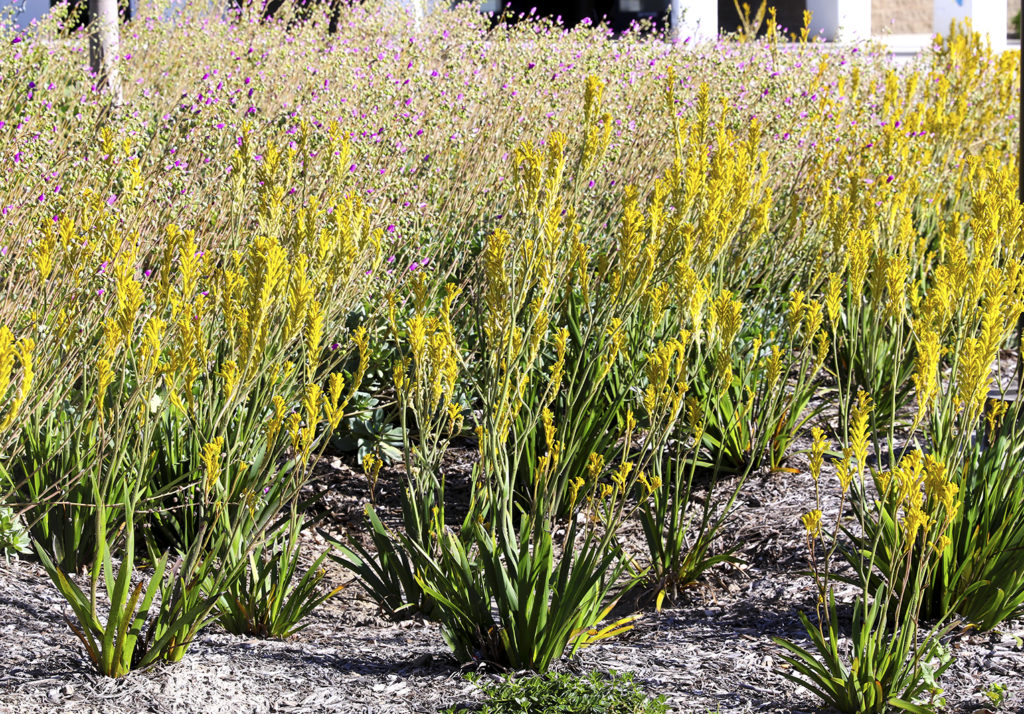
The Kangaroo Paw is an Australian native known for its unique flowers that resemble a kangaroo’s paw. The almost fingerlike flowers are also known for its velvety colorful flowers. Kangaroo paws come in four varieties and colors: Amber velvet, gold velvet, regal velvet, and ruby velvet. The Kangaroo Paw is also known for attracting hummingbirds and butterflies. The college campus has all four plant colors on the central mall pathways that lead to the central mall fountain.
7. Bulbine (Bulbine Frutescens)
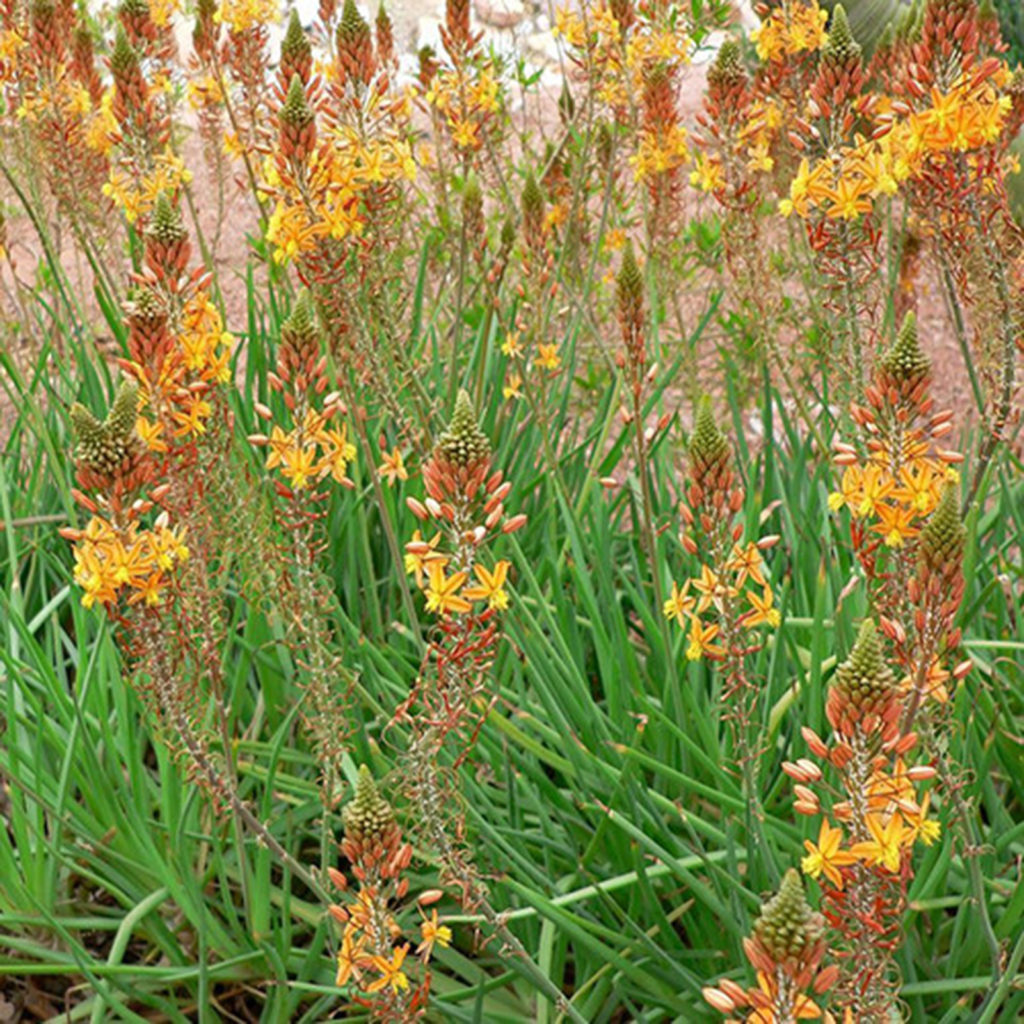
The bulbine is a flowering succulent native to Southern Africa and is a member of the succulent family. The bulbine blooms year-round, with bright blooms of orange and yellow flowers. This flowering succulent grows between 1 to 2 feet and as wide and requires full sun. The bulbine is also drought-tolerant, withstanding the California summer months. The bulbine can be seen between the A building and the S building.
8. California Lilac (Ceanothus Griseus Hor) ‘Yankee Point’
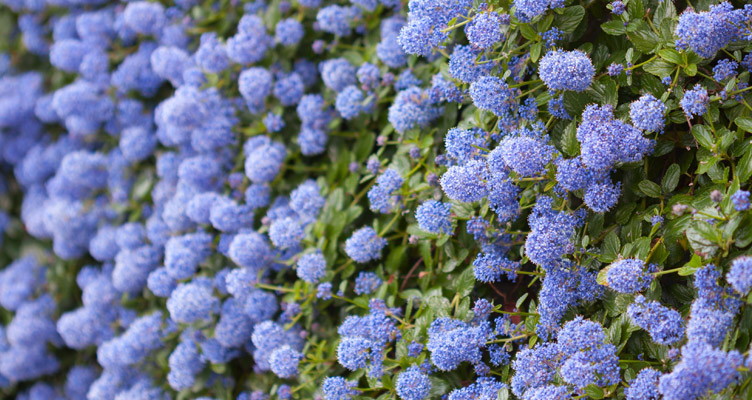
The California Lilac Is a California-native and drought-tolerant plant. The California lilac has bright bluish-purple flowers with some species having white and pink flowers. This Calif. native attracts both bees and butterflies. The California lilac is not a true lilac but still offers bright and similar fragrant blooms. These plants thrive under full sun and only require water once or twice a month once established. The California lilac comes in 12 different species. This plant can be seen along the outer pathways of the Central Mall pathways.
9. Rock Purslane (Cistanthe Grandiflora)

/ Photo by Nikki Nelsen/ el Don 
/ Photo by Nikki Nelsen/ el Don
The rock purslane is a member of the succulent family. This Child native succulent requires full sun to partial shade. Commonly known for their bright pinkish mauve flower blooms that bloom in late spring and early summer to late summer to early fall. This 2-inch flower blooms only last one day. This plant can grow between 10 to 15 inches and can stretch and spread up to 4 feet. This colorful ground cover makes for a hardy drought tolerant option while also being aesthetically pleasing. Rock purslane is very popular in rock gardens, near pools and water sources and accent plants that can be noticed all over the state of California. These evergreen succulents can be seen along the pathway of the SAC central mall.
10. Lantana (Lantana Spp.)
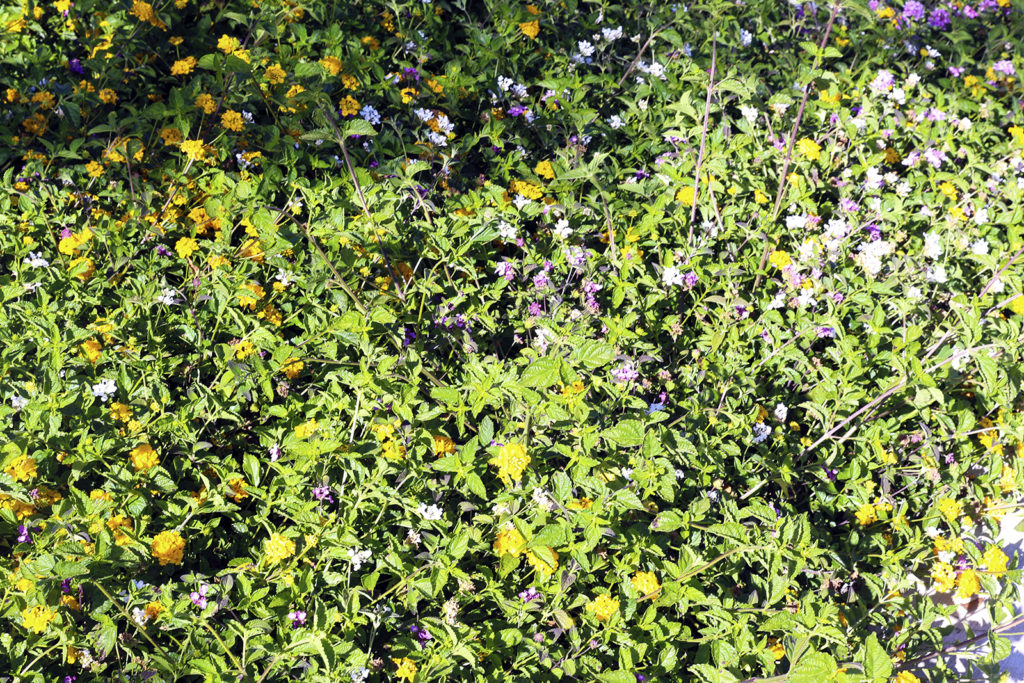
The Lantana is a South American native, broadleaf evergreen. This plant is full sun and requires very little water maintenance. The Lantana is known for its fragrant colorful blooms that can come in about 150 species. This plant is perennial and only blooms during the months of July to December but can bloom nearly year-round in certain frost-free regions. The lantana can grow between 12 to 15 inches in height and 18 to 24 inches wide. This plant also attracts butterflies to its bright blooms. This ground-cover can be seen along with the campuses Nealley Library.
11. Mexican Lobelia (Lobelia Laxiflora)
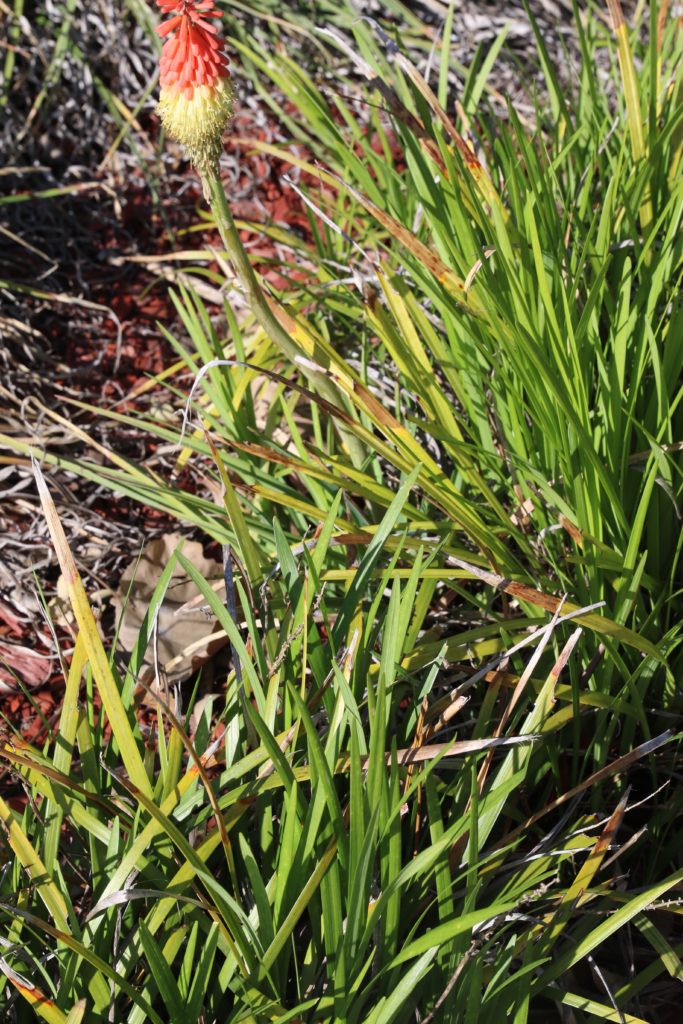
/ Photo by Nikki Nelsen/ el Don 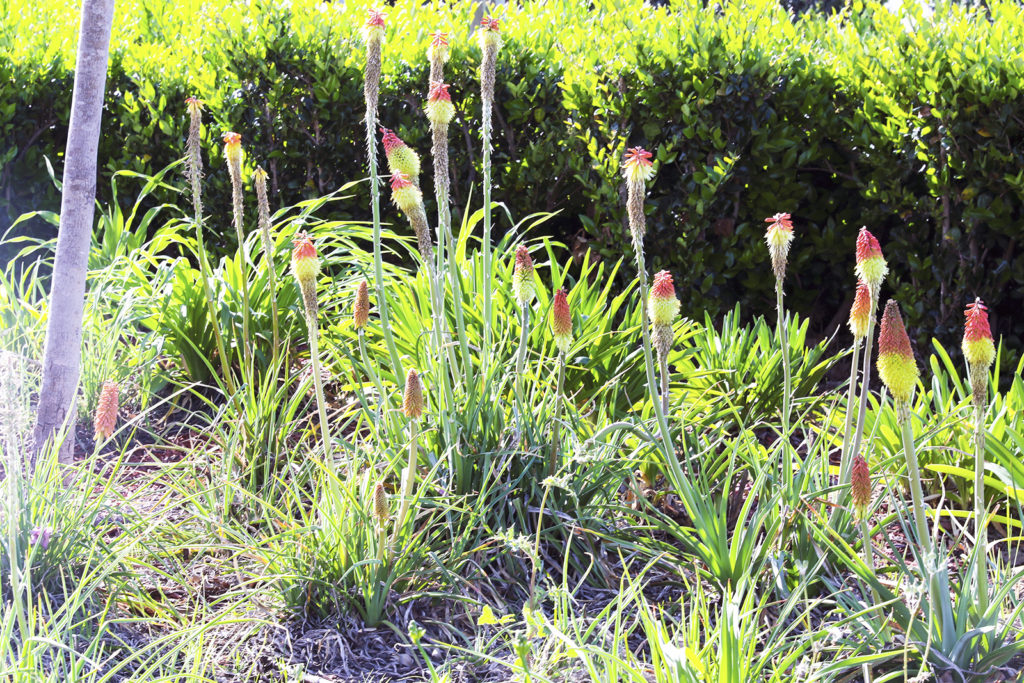
/ Photo by Nikki Nelsen/ el Don
The Mexican lobelia blooms reddish-orange and pink blooms and is an Arizona, Mexico and Central America native drought-tolerant plant. This plant grows between 1 and 2 feet in height and can spread 5 feet or more. This bright evergreen shrub also attracts hummingbirds. The Mexican Lobelia only requires full sun and partial shade and it can be seen on the SAC campus near Dunlap Hall.
12. Dwarf Myrtle (Myrtus Communis) ‘compacta’

The Dwarf Myrtle, a southern Japan native evergreen shrub requires full sun and is drought tolerant. During the spring, these plants bloom white fragrant flowers and blackberries in the fall and early winter. The dwarf myrtle can grow up to 2 to 3 feet in height as wide and is a natural bird attractor. This shrub is extremely low maintenance and is a dwarf version of the sweet myrtle.
13. Dwarf Olive (Olea Europaea) ‘Little Ollie’
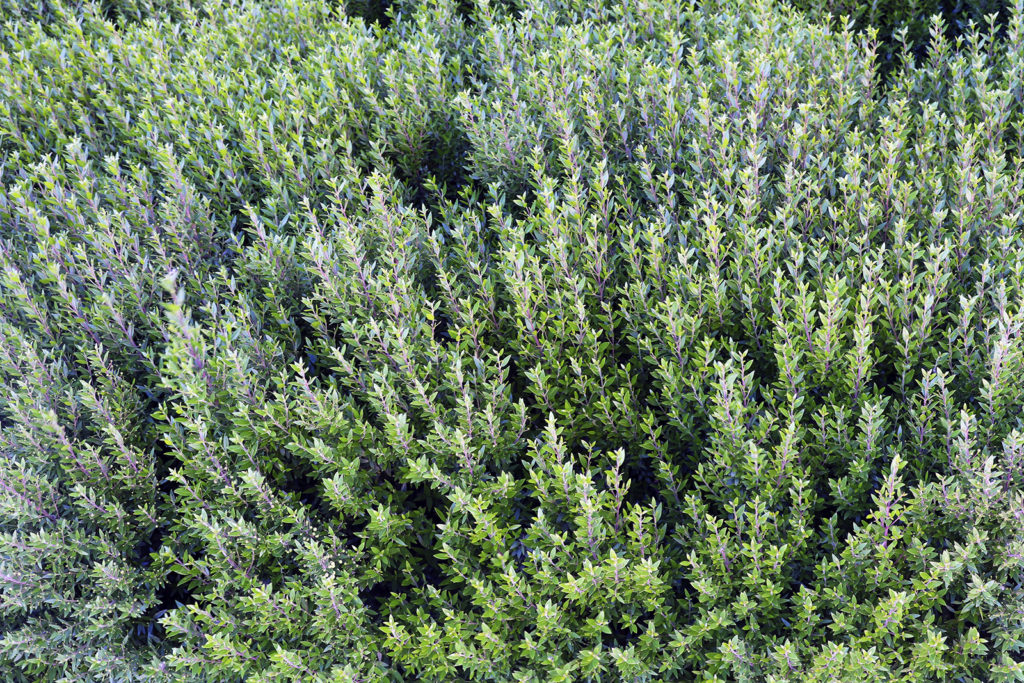
the Dwarf olive, an evergreen shrub gets its name ‘Little Ollie’ because it is a smaller fruitless version that mimics the classic olive tree. The dwarf olive is slow to a moderate growing nonfruiting tree that requires the sun to partial shade but can adapt to full sun. This plant is common for its white blooms in the spring and can grow up to 4 to 8-feet in height and as wide. ‘Little Ollie’ shrubs can be seen along the northern side of the C-building.
14. Coffeeberry (Rhamnus Californica)
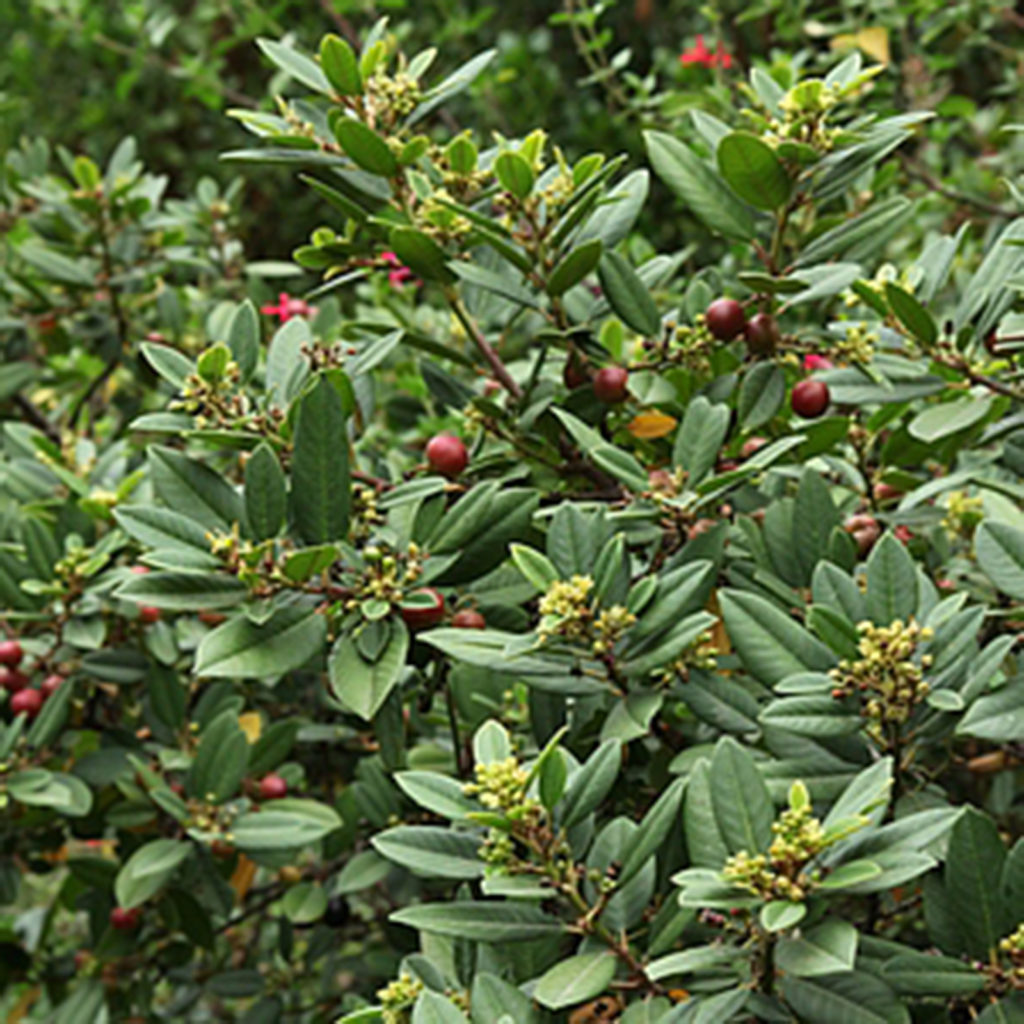
The Coffeeberry is a California native evergreen shrub that grows between 6 to 10 feet in height along with wide. The coffeeberry is extremely drought only requiring water two times a month in order to thrive. In the late summer Berry’s bloom that turns from red to black to the color of whatever bird has been consuming the berries in the area. This shrub can be seen along the Central Mall’s pathways.
15. Lemonade Berry (Rhus Integrifolia)
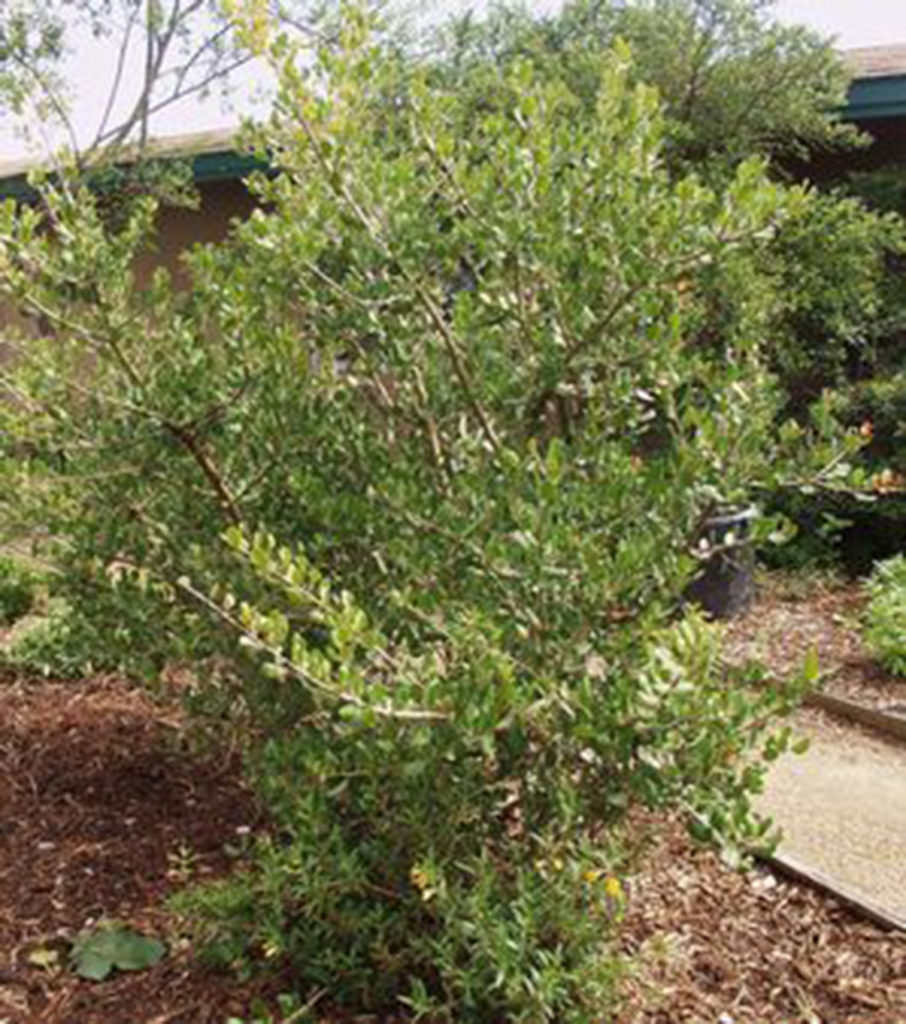
Evergreen shrub is a California native plant is extremely drought tolerant once established and can withstand the high California heats and experienced during the summer months and is fire retardant. The fruit on the lemonade berry has a tart taste that gives the shrub its unique name. This shrub can grow upright to heights of up to 10 to 30 feet and can stretch 30 feet wide. The lemonade berry flowers are pink and white that blooms between the months of February to May. The Lemonade Berry plant requires partial shade to moderate sun.
- Landscape and Garden Tour of the New Central Mall - June 1, 2019
- Subculture Party Brings Rave Culture to DTSA - May 9, 2019
- California Needs to Lower Its Outrageous Gas Prices - May 3, 2019


